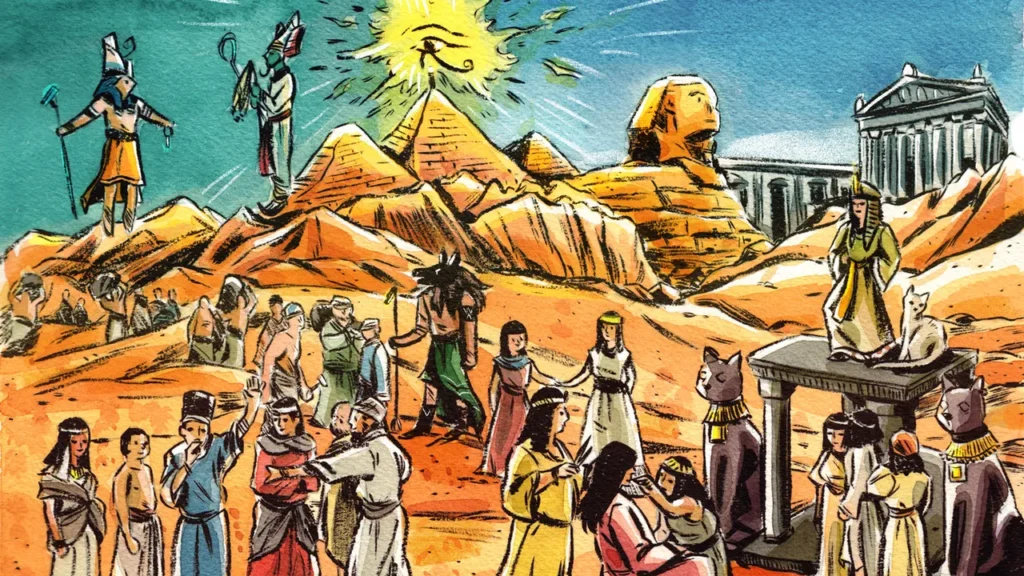Introduction: Ancient Artz
Ancient Artz, a captivating window into the souls of our ancestors, offers a profound exploration of human creativity, belief systems, and societal structures. From the enigmatic cave paintings of prehistoric times to the intricate mosaics of the Roman Empire, these artistic expressions have endured the test of time, leaving an indelible mark on our understanding of history and culture. This article embarks on a comprehensive journey through the diverse and fascinating world of ancient artz delving into its origins, key characteristics, and enduring legacy.
The Dawn of Ancient Artz
- Cave Paintings:
- Uncovering the earliest forms of artistic expression.
- Exploring the significance of animals, humans, and abstract symbols.
- Analyzing techniques and materials used.
- Discussing the potential meanings and purposes of these artworks.
- Venus Figurines:
- Examining the prevalence of female representations.
- Analyzing the physical characteristics and symbolism of these figurines.
- Exploring theories about their function and significance.
- Megalithic Structures:
- Investigating the monumental architecture of prehistoric societies.
- Discussing the construction methods and potential purposes of structures like Stonehenge.
- Exploring the astronomical and ritualistic significance of these sites.
The Rise of Civilizations: Ancient Near East and Egypt
- Mesopotamian Ancient Artz
- Exploring the art of Sumer, Babylon, and Assyria.
- Analyzing the development of cuneiform and ancient artz its artistic expression.
- Discussing the themes of power, religion, and warfare in Mesopotamian art.
- Egyptian Art:
- Examining the art of the Old, Middle, and ancient artz New Kingdoms.
- Analyzing the iconic imagery of pharaohs, gods, and the afterlife.
- Discussing the techniques of painting, sculpture, and architecture.
- Exploring the role of art in Egyptian religion and society.
Classical Greece: Ancient Artz
- Greek Sculpture:
- Analyzing the evolution of sculptural styles from archaic to classical periods.
- Discussing the idealization of the human form and the concept of beauty.
- Exploring the themes of mythology, heroism, and civic pride.
- Greek Vase Painting:
- Examining the techniques of black-figure and red-figure pottery.
- Analyzing the narrative and decorative elements of vase paintings.
- Discussing the influence of mythology and everyday life on vase painting.
- Greek Architecture:
- Exploring the orders of architecture (Doric, Ionic, Corinthian).
- Analyzing the principles of balance, harmony, and proportion.
- Discussing the function and symbolism of temples and other public buildings.
The Roman Empire: Ancient Artz
- Roman Sculpture:
- Analyzing the transition from Greek idealism to Roman realism.
- Discussing the portrayal of emperors, deities, ancient artz and historical figures.
- Exploring the use of sculpture for propaganda and public display.
- Roman Architecture:
- Examining the influence of Greek architecture on Roman design.
- Discussing the development of concrete and ancient artz its impact on architecture.
- Analyzing the construction of amphitheaters, baths, and triumphal arches.
- Roman Mosaics:
- Exploring the techniques and materials used in mosaic creation.
- Analyzing the themes and styles of Roman mosaics.
- Discussing the role of mosaics in Roman domestic and public spaces.
Ancient Artz in Asia: Diverse Traditions
- Indian Art:
- Exploring the art of the Indus Valley Civilization.
- Analyzing the Buddhist art of Gandhara and Mathura.
- Discussing the Hindu art of the Gupta period.
- Chinese Art:
- Examining the art of the Shang and ancient artz Zhou dynasties.
- Analyzing the development of calligraphy and painting.
- Discussing the philosophy and symbolism in Chinese art.
- Japanese Art:
- Exploring the art of the Jomon and Yayoi periods.
- Analyzing the influence of Chinese art on Japanese aesthetics.
- Discussing the development of Shinto and Buddhist art.
The Legacy of Ancient Art
- Influence on Subsequent Art:
- Analyzing the enduring impact of ancient artz on Renaissance and later periods.
- Discussing the revival of classical styles and the emergence of new artistic movements.
- Art History and Archaeology: Ancient Artz
- Exploring the methods and challenges of studying ancient artz.
- Discussing the importance of preservation and conservation efforts.
- Analyzing the role of ancient art in shaping our understanding of human history.
Conclusion
Ancient Artz stands as a testament to the boundless creativity and ingenuity of our ancestors. Through its exploration, we gain invaluable insights into the beliefs, values, and aspirations of past civilizations. By appreciating the beauty and complexity of these artistic expressions, we develop a deeper connection to our shared human heritage and a profound respect for the artistic legacy that continues to inspire and enrich our world.

